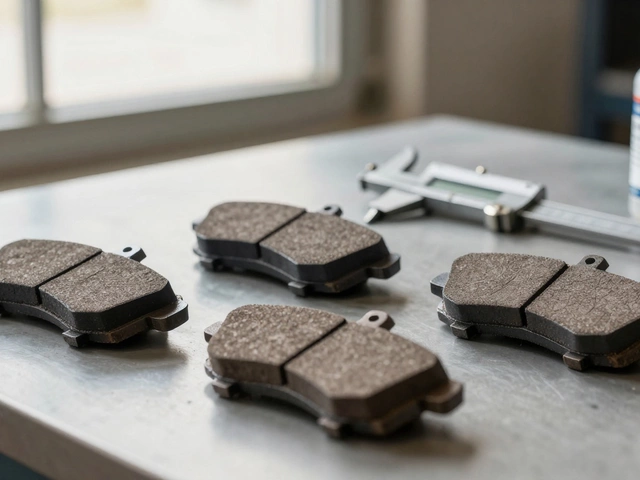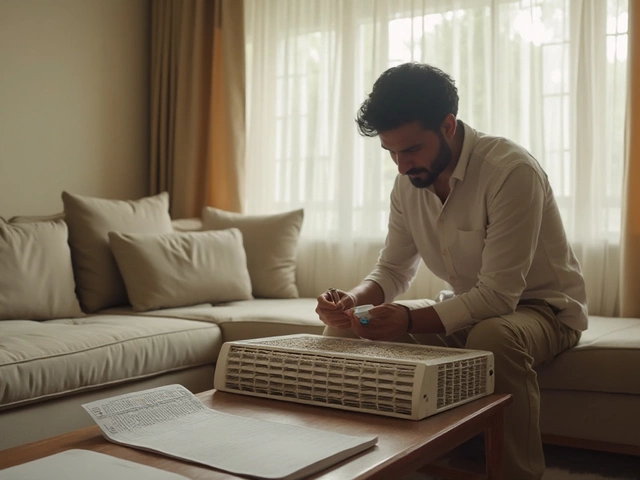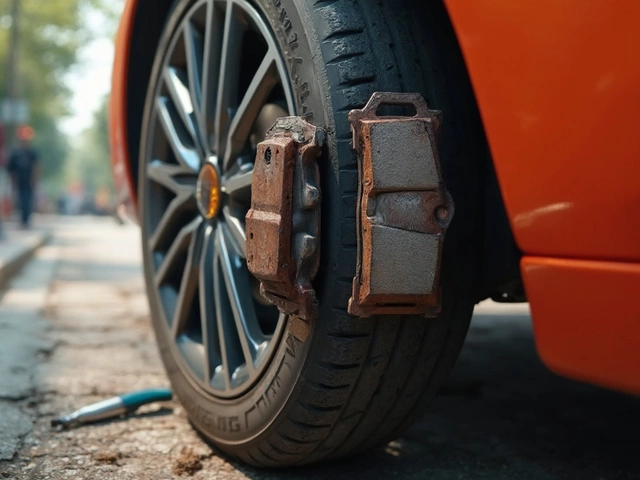Spotting a crack in your radiator can ruin your day—coolant leaking, car overheating, and your wallet hurting just thinking about repair bills. But can you actually seal a cracked radiator yourself, or is that just pouring money (and coolant) down the drain?
First, let’s get real: most small cracks can be temporarily sealed, but the fix is rarely permanent. Radiator sealants are a go-to for lots of DIYers. They’re cheap, come in liquid or powder form, and pour right into your radiator. Sounds easy, right? But there’s a catch—using the wrong stuff or ignoring a big crack can turn a small leak into a full-blown engine headache.
If you’re stuck on the side of the road or just need to make it to payday, knowing your options can save you some hassle (and maybe even your engine). There’s a time and a place for radiator sealants, and knowing how and when to use them makes all the difference. Let's break down the good, the bad, and the things they don’t tell you on the bottle.
- How Radiators Crack and Why It Matters
- Temporary Fixes: What Actually Works?
- When Not to Seal: Risks and Red Flags
- Long-Term Solutions and Smart Prevention
How Radiators Crack and Why It Matters
Let’s face it, a cracked radiator is one of those problems that sneaks up on you, but it rarely comes out of nowhere. Most radiators crack for a few solid reasons, and knowing them helps you dodge repeats down the road. Usually, it comes down to heat cycles, pressure, and sometimes just cheap plastic parts.
Modern radiators are split between aluminum cores and plastic end tanks. Plastic reacts badly to extreme temperature swings—think freezing mornings followed by engine heat. Over time, this stress can make the plastic brittle and crack. Aluminum can crack, too, typically from things like road vibrations, overheating, or even using water instead of actual coolant (water corrodes aluminum).
Surprisingly, even over-tightening hose clamps can cause tiny cracks near the connection points. And if you keep running your cracked radiator, pressure forces coolant out through the gaps fast, raising the risk of an overheated engine or, even worse, a blown head gasket. Coolant loss means less protection for your engine, which is one of the fastest ways to ruin it for good.
“A small radiator crack can lose a quart of coolant in less than an hour at full engine temp. Let that go, and you’re gambling with major engine damage.” — Matt Smith, ASE Certified Master Mechanic
Wondering how common this is? Check out the numbers below:
| Cause | % of Radiator Failures |
|---|---|
| Plastic cracking (age/heat stress) | 40% |
| Corrosion (using tap water/mixed coolants) | 30% |
| Physical impact (rocks, debris, collision) | 20% |
| Poor installation (clamp/bolt pressure) | 10% |
So, ignoring a crack brings more risk than most folks realize. A minor crack might sound harmless, but lose enough coolant and any engine can overheat in minutes. Bottom line: the sooner you spot and deal with a crack, the less pain you’ll feel later—on the road and in your wallet.
Temporary Fixes: What Actually Works?
If you catch a radiator crack before all your coolant pours out, there are a few ways to hold things together long enough to buy some time. These fixes aren’t magic, but they’ll get you to the shop or maybe last a week if you’re lucky. The top go-to? Radiator sealants. They’re sold at every auto parts store and come in liquid, powder, or tablet form. You just pour them into the radiator or reservoir and they’re supposed to plug up small leaks from the inside.
An old-school favorite is cracked radiator sealant like Bar’s Leaks or BlueDevil. These brands have been around for years, and most people who try them have short-term success—assuming the crack is small and not in some high-pressure spot. The way these work is pretty simple: liquid sealant mixes with your coolant, finds the crack, and hardens as it contacts air from the leak. But if you’re dealing with a big split or a crack at a hose joint, don’t count on this to save you.
If you’re out of options and just limping home, a bar of soap or some epoxy can work for a short time. Here’s how to use them:
- Epoxy putty: Grab a two-part epoxy (some even say the stuff from a hardware store will work in a pinch). Let the radiator cool, clean the crack, mix up the putty, and smear it right over the problem. Let it cure for the times listed on the package.
- Soap trick: This is old but worth a shot if you’ve got nothing else. Rub a bar of soap back and forth over the clean, dry crack. It will gum up the leak, but only for a quick haul.
No matter what method you use, never open a hot radiator. Always wait until everything has cooled off completely—nothing ruins a day like a face full of boiling coolant.
One last heads-up: none of these are a real fix. They’re band-aids, not a cure. If you want your car to keep running and avoid expensive engine damage, plan for a proper replacement or pro repair as soon as possible.

When Not to Seal: Risks and Red Flags
Before you reach for that bottle of sealant, it's smart to know when trying to seal a cracked radiator is actually a bad idea. Here’s the deal: sealing isn’t a magic cure for every radiator leak, and taking the wrong approach can cause more headaches.
If the crack in your radiator is long (think bigger than an inch), or if you see chunks missing, no sealant is going to patch it for long. Heavy damage usually means the radiator’s already weak or brittle, and any attempt to seal is like slapping a Band-Aid on a busted pipe. In fact, manufacturers only recommend sealants for hairline cracks or tiny pinhole leaks, not big gaps or blown seams.
Also, watch out if you spot coolant pooling under your car every time you park, see white smoke from the exhaust, or notice your car overheating right after topping off the coolant. These are big red flags that the problem is beyond a quick fix.
- Cracked radiator near the plastic tank ends—these areas handle lots of pressure and usually fail again after a patch job.
- Repeated overheating—sealants sometimes clog up small radiator passages, making cooling even worse.
- Radiators with rusty or corroded fins—a sealant won’t bond well and can cause more leaks.
Using a cheap sealant might save you a few bucks up front, but it can mess up other parts of your cooling system. Some sealants harden inside tiny coolant passages and can even jam up your heater core, leaving your defroster blowing cold in the winter.
Here’s a look at what can happen when you skip a proper fix:
| Problem | Potential Consequence |
|---|---|
| Large crack sealed poorly | Crack grows, sudden coolant loss |
| Sealant clogs coolant passages | Overheating, engine damage |
| Ignoring constant leaks | Blown head gasket, high repair costs |
| Patching corroded radiators | Recurring leaks, total radiator failure |
If you’re not sure how bad the damage is, it’s worth getting a pro to check it out. Spending money on a new radiator or professional repair usually beats the cost and stress of dealing with a cooked engine later on. Sometimes, a temporary seal is all you need to get you home, but if you’re using sealant over and over, that’s your car screaming for real help.
Long-Term Solutions and Smart Prevention
If you’re hoping for a magic fix, here’s the truth—no sealant will hold forever. For a true long-term solution, replacing your cracked radiator is the only way to really solve the problem. Modern radiators, especially the plastic-and-aluminum types you’ll find in most cars built since the early 2000s, just aren’t meant to be patched up permanently. Welding isn’t usually worth it either, unless it’s an old-school all-metal radiator, and even then, it’s a specialized job.
Swapping in a new or good used radiator is usually a straightforward job for most vehicles. Radiators aren’t cheap, but running your engine hot because of a risky repair will cost way more in the long run. Most shops can swap one out in a few hours, or you can grab some basic tools and tackle it yourself if you’re comfortable. Pro tip: take a few photos as you unplug hoses and sensors so you don’t forget what goes where.
Want to avoid cracked radiators in the first place? Here are a few smart prevention moves:
- Change your coolant every 2-3 years. Old coolant breaks down, gets acidic, and eats away at the radiator inside.
- Check for leaks often. Small cracks can get worse fast, especially under pressure.
- Inspect radiator hoses for bulges, softness, or leaks. A blown hose can make your radiator work harder than it should.
- Don’t ignore engine temperature warnings or steam from under the hood. Overheating even once can finish off a weak radiator.
One cool fact: some high-mileage cars make it over 200,000 miles on the same radiator just with regular coolant changes and quick attention to leaks. Stay on top of small problems and your cooling system can last a lot longer than you might think.











Write a comment